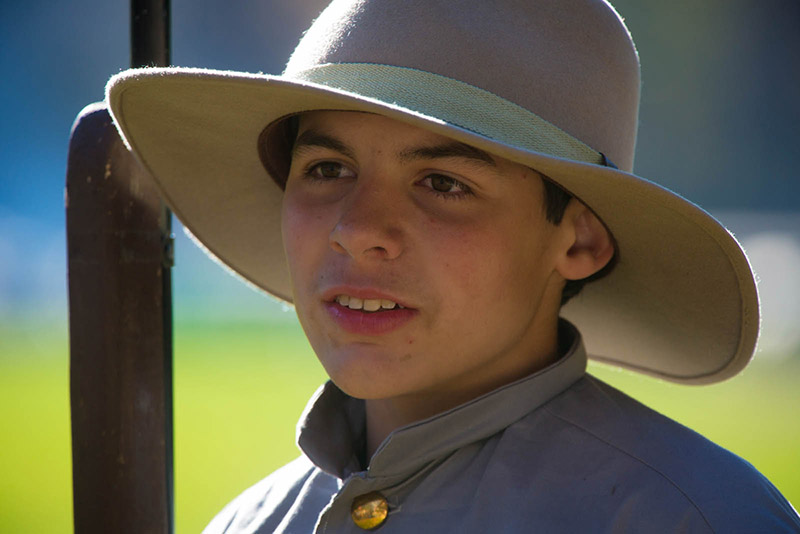
A Scout participates in the Battle of Belzer, a Civil War education program in the Crossroads of America Council, BSA. Photo by Jim Brown
Informal portraits (not made in a studio) can be very compelling. These are pictures in which the main content of the picture is a person’s face. Closeup of a person’s face really draw a viewer’s attention. It is the face that shows youth or age, hardship or relaxed life. Viewer’s can “read” much about a person’s life by a study of the face. Within the boundaries of the face, the most important feature is the eyes. And since they are most important the nearest eye to the camera should be the point of focus of the lens.
The subject can be looking into the camera or not–both can be effective. When the subject is looking away from the camera, the picture seems more candid. However, when the subject is looking directly into the camera, the eyes seem to have direct contact with the viewer of the picture. In western culture, we place emphasis on direct eye contact. A person interviewing for a job who cannot look the interviewer directly in the eyes is not likely to be hired. Direct eye contact in a picture seems to draw us closer in a virtual relationship to the person.
National Geographic has named one such portrait of a 12-year-old Afghan girl by photographer Steve McCurry as one of its top 100 pictures.
Photographers are always looking for some expression that defines the moment. Sports photographers look for moments of elation or dejection or anger. In tragic situations, emotion is easy to find but sad to photograph.
If the picture includes a person’s natural environment, say where they work or play, we call it an environmental portrait. The background of the pictures adds to the context of the person. We can see if the person is organized or more random in the placement of things around them. In other words, the background of the picture adds to our visual interpretation of the person.
Cross-cultural studies have shown that facial expressions are pan-cultural. That is, facial expressions are universal across very different cultures with different languages all across the world. A sad face is universally under door, so too is a happy one. Perhaps this is what makes a good portrait picture of a person so compelling. We feel we understand the person.
